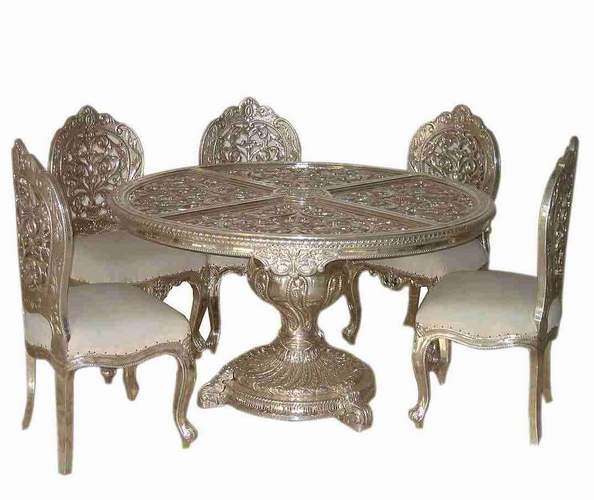The Baroque style used very elaborate decoration and precious materials to create spectacular displays of the owners wealth. Chairs, Tables and Cabinets were embellished with ornate carving, gilding and finely detailed marquetry.
Rich colours, fine tapestries, marble and semi-precious stones, set in scrolling designs, or arabesques, contributed to the sense of status and drama.
Carved Chair
The elaborately pierced splat of this English side chair, non fitted furniture, shows the influence of the engraved designs of Daniel Marot. This piece shows the exquisite wood carving skills demanded of the carvers of the era.
The florid pattern and tall, formal shape are typical of the grandiose Baroque style.

Gilt Gesso
Originating in Italy, gilt gesso became really fashionable in England and in France. A design would be carved in wood, then coated with layers of gesso - a mixture of glue and powdered chalk.
Once the gesso had hardened, the design was re-carved and gilded. This technique was used to decorate mirrors, tables and chests.

Turned Wood
Created by applying cutting tools to a rotating wooden surface, turned wood was a popular feature of the vernacular handmade furniture of the period, such as the heavy oak baluster of this colonial court cupboard.
Turned wood was also seen on posts, legs, and rungs. As the century progressed, these turnings became less heavy in appearance and more columnar.

Verre Eglomise
This technique imitated the sumptuous effect of gilded glass, and was quite often used to decorate mirrors. The design was actually painted on the underside of the glass, rather than on the front.
The glass was prepared using the base of egg white and water and then gilded. Once dry, the design was engraved into the gilding before the surface was painted.

Marquetry
The practice of arranging small pieces of veneer into an intricate design became a speciality of the century, particularly in the Low Countries, and was very much sought after.
Veneers were made of exotic woods such as mahogany and also native fruitwoods, including plum and cherry. The veneers were used in their natural colours or stained in bright shades.

Silver Furniture
Owning silver furniture epitomized the phenomenal wealth of the privileged few. The exuberant Louis XIV of France ordered suites of solid silver furniture to furnish his palace at Versailles.
Other rulers, such as Charles II of England, imitated this lavish display of wealth with wooden furniture pieces covered with thin sheets of silver.

No comments:
Post a Comment